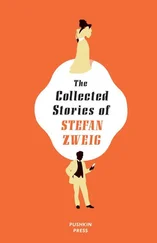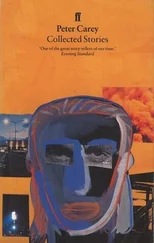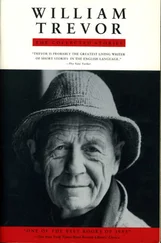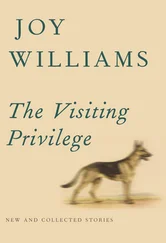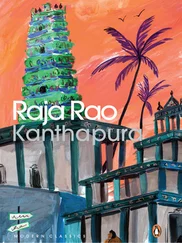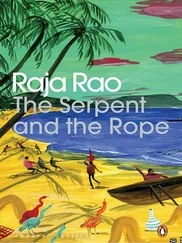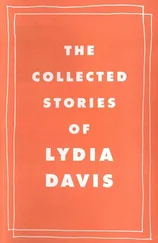Raja Rao - Collected Stories
Здесь есть возможность читать онлайн «Raja Rao - Collected Stories» весь текст электронной книги совершенно бесплатно (целиком полную версию без сокращений). В некоторых случаях можно слушать аудио, скачать через торрент в формате fb2 и присутствует краткое содержание. Год выпуска: 2014, Издательство: Penguin, Жанр: Классическая проза, на английском языке. Описание произведения, (предисловие) а так же отзывы посетителей доступны на портале библиотеки ЛибКат.
- Название:Collected Stories
- Автор:
- Издательство:Penguin
- Жанр:
- Год:2014
- ISBN:нет данных
- Рейтинг книги:5 / 5. Голосов: 1
-
Избранное:Добавить в избранное
- Отзывы:
-
Ваша оценка:
- 100
- 1
- 2
- 3
- 4
- 5
Collected Stories: краткое содержание, описание и аннотация
Предлагаем к чтению аннотацию, описание, краткое содержание или предисловие (зависит от того, что написал сам автор книги «Collected Stories»). Если вы не нашли необходимую информацию о книге — напишите в комментариях, мы постараемся отыскать её.
Collected Stories — читать онлайн бесплатно полную книгу (весь текст) целиком
Ниже представлен текст книги, разбитый по страницам. Система сохранения места последней прочитанной страницы, позволяет с удобством читать онлайн бесплатно книгу «Collected Stories», без необходимости каждый раз заново искать на чём Вы остановились. Поставьте закладку, и сможете в любой момент перейти на страницу, на которой закончили чтение.
Интервал:
Закладка:
English as a code is now universally shared by both native and non-native speakers. What is not always shared or recognized are the manifestations of a specific culture embedded by the writer in the language. Though the language can now be taken for granted, what cannot any longer be taken for granted are the cultural deposits transmitted by the language. To understand them, the reader, especially if he is a native speaker, must equip himself with a knowledge of the writer’s socio — cultural milieu. Would he not be expected to do so if he were to read an English translation of, say, the Mahabharata or, for that matter, the Iliad?
Culture determines literary form, and the form of the novel from cultures within India has been strongly influenced by those cultures themselves, resulting in something different from the form of the novel in the West. Rao himself is of the opinion that an Indian can never write a novel; he can only write a purana. The puranas are sacred history included in the canon of scripture, and they tell the stories of the origin of the universe, the exploits of gods and heroes, and the genealogies of kings. Their impact on the minds and imaginations of the people of India has been profound. Through them the Vedas and the Upanishads and the ideas of the great tradition of Hinduism were communicated by intention and organized effort to the people and woven into their lives in festivals and rituals. The Mahabharata and the Ramayana were expressly composed for the same purpose. There is, at least in southern India, an unbroken tradition of recitation of the two epics by ruler and teacher in the vernacular languages. The epics were recited in the form of stories by the sutapauranikas, the bards who recite the puranas.
Sanskrit is, in fact, an obsession with Rao: ‘It is the source of our culture. . and I have wished a thousand times that I had written in Sanskrit.’ 7Intellectually and emotionally, he is deeply rooted in the Indian tradition, especially in the philosophical tradition of the Advaita (‘monism’) Vedanta of Sankara (eighth century). Sankara was interested in the nature of the relationship of the individual self (atman) with the universal Self (Brahman). He insisted that they were identical ( tat tvam asi , ‘You are That’), 8and that all appearances of plurality and difference arose from the false interpretation of the data presented by the mind and senses. He therefore rejected subject— object dualism. The only reality is Brahman. For Sankara, liberation (moksha) was the ultimate aim, and he defined it as intuitive knowledge of the identity of atman and Brahman, and not, it is to be remembered, as union with God.
Rao’s ideas of language, especially the empowerment of the word, are formed by the linguistic speculations of the Indians, notably Patanjali (second century bce) and Bhartrhari (fifth century ce). Rao himself observes:
To say ‘flower’. . you must be able to say it in such a way that the force of the vocable has the power to create the flower. Unless word becomes mantra, no writer is a writer, and no reader a reader. . We in India need but to recognize our inheritance. Let us never forget Bhartrhari. 9
Mantra may be understood either as an instrument of thought (< Skt. man , to think + tra , a suffix used to make words denote instruments), or as salvific thought (< Skt. man , to think + trai , to save). In an oral culture, such as that of the Indians, thinking is done mnemonically to facilitate oral recurrence. Thought comes into existence in rhythmic, balanced patterns, in repetitions or antitheses, in epithetic, aphoristic or formulaic utterances, in proverbs or in other mnemonic forms. Words are therefore invested with power, and this relates them to the sacral, to the ultimate concerns of existence.
In examining Rao’s use of English, it is important to keep in mind his philosophical and linguistic orientations. The house of fiction that he has built rests on these twin foundations. Among Indian writers in English he is perhaps unique in his attempt not only to nativize but also to Sanskritize the English language. Sanskritization is used here in the sense it is understood by anthropologists as a process of social and cultural change in Indian civilization. Rao strains to the limit all the expressive resources of the language. As a result, the Indian reality that emerges from his writing is authentic. Foremost among the problems the Indian writer has to wrestle with are, first, the expression of modes of thinking and feeling specific to his culture, and, second, terminology. Rao overcomes the first problem by invariably drawing upon Kannada and Sanskrit, and in the process he uses devices like loan translation, idiomatic and syntactic equivalences, and the imitation of native-style repertoires. He overcomes the second problem of finding words for culturally bound objects by contextualizing them so that their meanings are self-evident. By evoking the necessary cultural ambience, these strategies help the writer to be part of the mainstream of the literatures of India.
Among Kannada, Sanskrit, English and French, it is English that Rao most consummately possesses, and it is in that language that his fiction most consummately speaks to us. From the beginning, English is ritually de-anglicized. In Kanthapura , English is thick with the agglutinations of Kannada; in The Serpent and the Rope , the Indo-European kinship between English and Sanskrit is creatively exploited; and in The Cat and Shakespeare , English is made to approximate the rhythm of Sanskrit chants. At the apex of this linguistic pyramid is The Chessmaster and His Moves , wherein Rao has perfected an idiolect uniquely and inimitably his own. It is the culmination of his experiments with the English language spanning more than fifty years. The Chessmaster and His Moves has none of the self-consciousness in the use of English that characterizes his other work. In it he realizes the style that had eluded him in The Serpent and the Rope . Of style, he writes:
The style of a man. . the way he weaves word against word, intricates the existence of sentences with the values of sound , makes a comma here, puts a dash there: all are signs of the inner movement, the speed of his life, his breath ( prana ), the nature of his thought, the ardour and age of his soul. (1960: 164–65)
A peasant society such as Kanthapura has a homogeneous outlook and tradition. Its relationship to tradition produces a sense of unity and continuity between the present and past generations. Tradition is therefore an important instrument in ensuring social interdependence. Under the Raj, even villages were not spared the blessings of Pax Britannica, which triggered socio-economic changes that eventually split up the small communities. The oral tradition itself became fragmented, though it remained the chronicler of the motherland through a poetically gifted individual’s repertoire.
Kanthapura is a mine of information about the socio — cultural life of peasant society in southern India in the twentieth century. This is usually the perspective from which the novel is read in the West — the little tradition pitted against the great tradition, to use the terms proposed by Robert Redfield. 10Redfield distinguishes the beliefs and practices of the folk from those of the elite in an agrarian society. The little tradition functions as a symbolic criticism of the great tradition, while at the same time gravitating towards it because of the latter’s institutional charisma. Brahmins, for instance, who sit atop the caste hierarchy, owe their status to the belief that they alone are empowered to perform the samskaras , the central rituals of Hinduism. The recognition by the peasants of a great tradition, of which their practices are a variant, implies a stratification of culture. In a complex society such as India, the stratification of culture implies a stratification of power and wealth. The representatives of the great tradition are the gentry, officials and priests who collectively form a ruling as well as a cultural elite. Relations between the little and great traditions are uneasy and fraught with tension as their interests are diametrically opposed. The existing cultural hierarchy relegates the peasantry to a status of permanent inferiority. The little tradition lacks the institutional means for a direct confrontation with the great tradition. Colonialism further increased the distance between the little and great traditions by diluting ethnic identities.
Читать дальшеИнтервал:
Закладка:
Похожие книги на «Collected Stories»
Представляем Вашему вниманию похожие книги на «Collected Stories» списком для выбора. Мы отобрали схожую по названию и смыслу литературу в надежде предоставить читателям больше вариантов отыскать новые, интересные, ещё непрочитанные произведения.
Обсуждение, отзывы о книге «Collected Stories» и просто собственные мнения читателей. Оставьте ваши комментарии, напишите, что Вы думаете о произведении, его смысле или главных героях. Укажите что конкретно понравилось, а что нет, и почему Вы так считаете.

